2017 Yamaha Snowmobile – At the last Snowshoot in West Yellowstone, Montana, the folks at Yamaha were proud to present their new products for 2017. Being a renowned engine manufacturer, Yamaha put a lot of effort into designing their new Genesys 998 turbo engine and thus, presenting the first 4-stroke snowmobile engine initially designed with a turbocharging system. Until now, manufacturers have been adding turbo systems to standard engines. The arrival of a new engine created the opportunity to introduce a new series of snowmobiles under the basic name of Sidewinder. Probably inspired by the name of the U.S. Army’s air-to-air missile, the Sidewinder is featured in almost all of the manufacturer’s segments and is the centerpiece of the 2017 lineup. Against all expectations, Yamaha, which told us it was no longer investing in the 2-stroke engine, is offering a new version of its legendary VK540. The fifth generation of this snowmobile arrives with several significant improvements for utility snowmobile fans. Yamaha is hitting hard for 2017 after presenting the SR-Viper a few years ago.
Genesys 998 Turbo
As we know, the Japanese tend to be conservative in their estimates. Officially announced at 180 horsepower by the manufacturer, this new engine actually develops even more power according to knowledgeable sources. One thing is for sure, every rider we met during our testing at Snowshoot 2017 was amazed at the power of all the snowmobiles equipped with this new engine. In addition to this phenomenal power at high rpm, it is its response at startup and recovery that also impresses. Being atypical of turbo engines, this response comes largely from the constant pressure technology of the turbine. By not having to build up the necessary pressure every time the driver presses the throttle, the turbo’s thrust is perfectly synchronized with the engine, and the result is unequivocal. In addition to these key elements of the 4-stroke engine, several other technological innovations characterize this new engine.
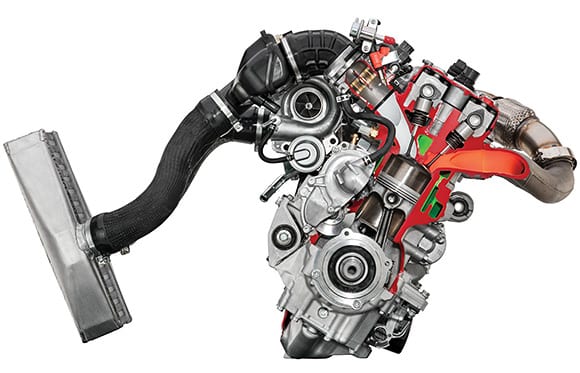
Sidewinder
As mentioned, the Sidewinder is the Japanese manufacturer’s new flagship for 2017. Offered in a multitude of variations and segments, Yamaha is betting big on these new snowmobiles to regain market share, starting next season. Based on the SRV chassis, the same one used for the SR-Viper, the weight distribution of the new engine seems to serve the chassis better. There is also a slight change in the look of the hood. While this gives a very nice aesthetic, the real reason is to bring a lot more cold air to the powerplant. Indeed, this new mill generates a lot of heat which in turn has to be efficiently evacuated. In addition to the undeniable power of all Sidewinder models, the rider’s comfort is ensured by the SRV suspension at the front and Dual Shock SR at the rear.
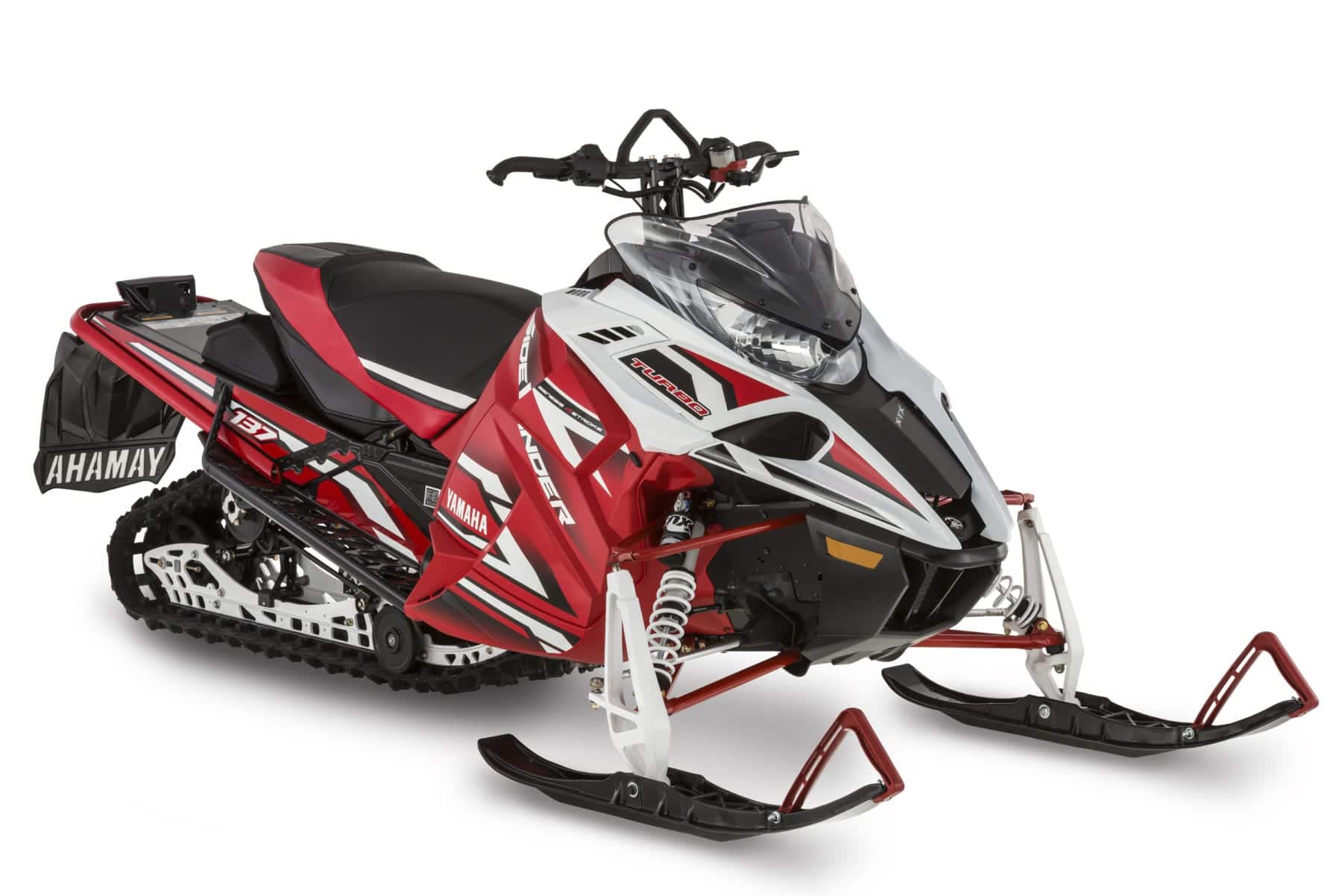
Série B-TX
New for 2017, the BTX series is offered in one version for the SR-Viper and 2 versions for the Sidewinder. This series is designed specifically for the northeastern part of the continent, which includes Quebec. Yamaha noticed that unlike other manufacturers, it sold more mountain versions (M-TX) in the eastern part of the continent than in the west. However, buyers had to quickly make several adjustments to make the snowmobile more suitable for sea level. Yamaha decided to develop a back country series, the B-TX series, which is better suited to the realities of the east. The B-TX series features a wider (40-inch) ski spread to improve trail riding, as well as factory-adjusted engine and pulley calibrations. Available only in 153-inch version, the B-TX series is equipped with a Comoplast Back country track with 1.75-inch profile, ideal for those who want the best of both worlds in trails and powder.
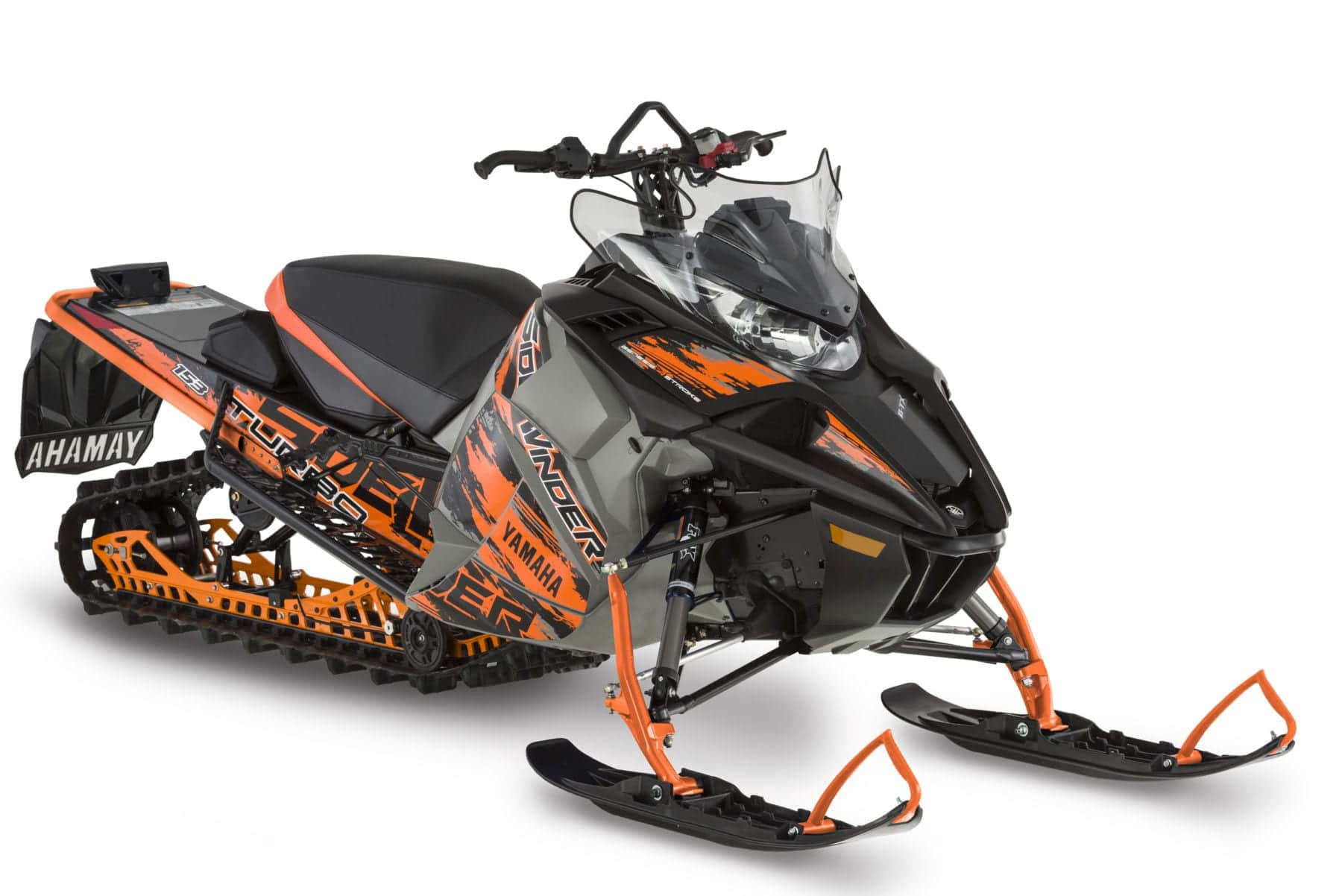
VK540 V
Being around since the 80’s with the same displacement, the VK 540 is still the workhorse snowmobile for many snowmobilers for over 3 decades. Based on simplicity and efficiency, this workhorse has been revisited by Yamaha engineers in 2017. Against all expectations, they invested a lot of effort on a 2-stroke technology in order to make the engine less polluting and less greedy. Thus, the 535cc engine now consumes 25% less fuel thanks to the Mikuni TM-33 flat-slide carburetor. This same carburetor is now electrically heated to avoid freezing episodes. To power the new electrical components of the VK540V, a new 400 watt CDI electric ignition now equips this engine. With an updated look that gives it a new lease on life, the new VK offers impressive traction with its 20x156x1.5 inch Cobra track. For less than $11,200 CDN, the new VK540V is sure to please many northern snowmobilers looking for an easy-to-maintain, reliable snowmobile with impressive work capabilities thanks to its 3-speed transmission.
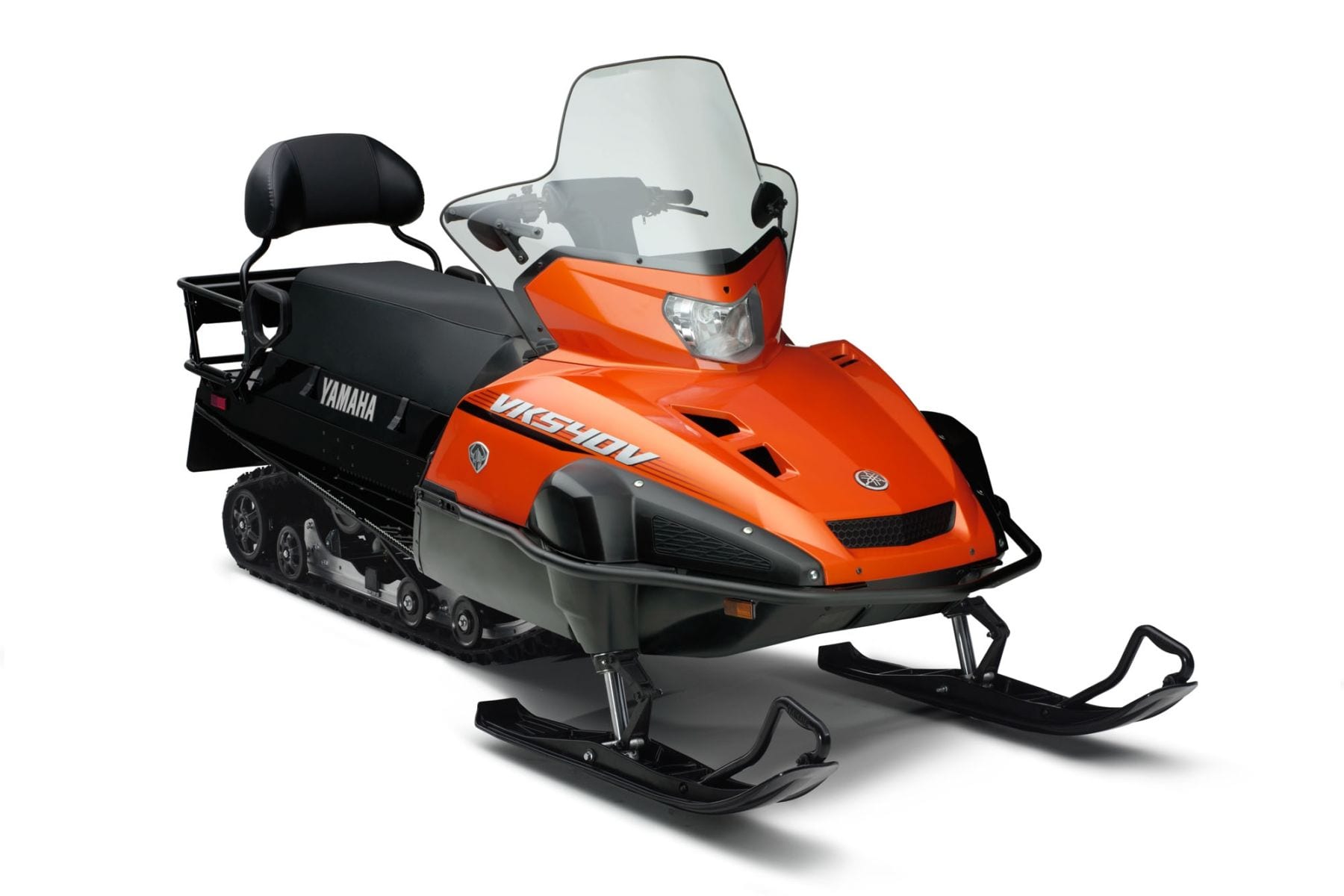
Marc Thibeault’s favorites
Last March, I had the chance to participate in SnowShoot 2017, the annual event that allows the world’s specialized media to test the models that will be offered during the next season. Being my 9th time attending, 2017 once again offered me the opportunity to test drive some amazing models and most importantly, pick my favorites. A heartbreaking moment if ever there was one, choosing only one vehicle per manufacturer is literally torture for a snowmobiler like me. Loving all categories of snowmobiles, it is a colossal challenge to have to choose 4 vehicles among the fifty or so I have personally tested. Each vehicle has its niche, its personality, its strengths and of course, its limitations. So that’s the mission I was given and I had to make my choices. That being said, you’ll see that in addition to my favorite vehicle by manufacturer, I’ve allowed myself a special mention for each of them.
Because of the way Yamaha names its models, it would be very surprising if I didn’t find a Sidewinder that meets my goals for 2017. Indeed, this model is offered in almost every track length for its introduction year, with the Japanese manufacturer counting heavily on this new standard to increase sales. That being said, and in my humble opinion, the gamble may very well pay off for Yamaha, as this is truly an important step forward for this manufacturer.
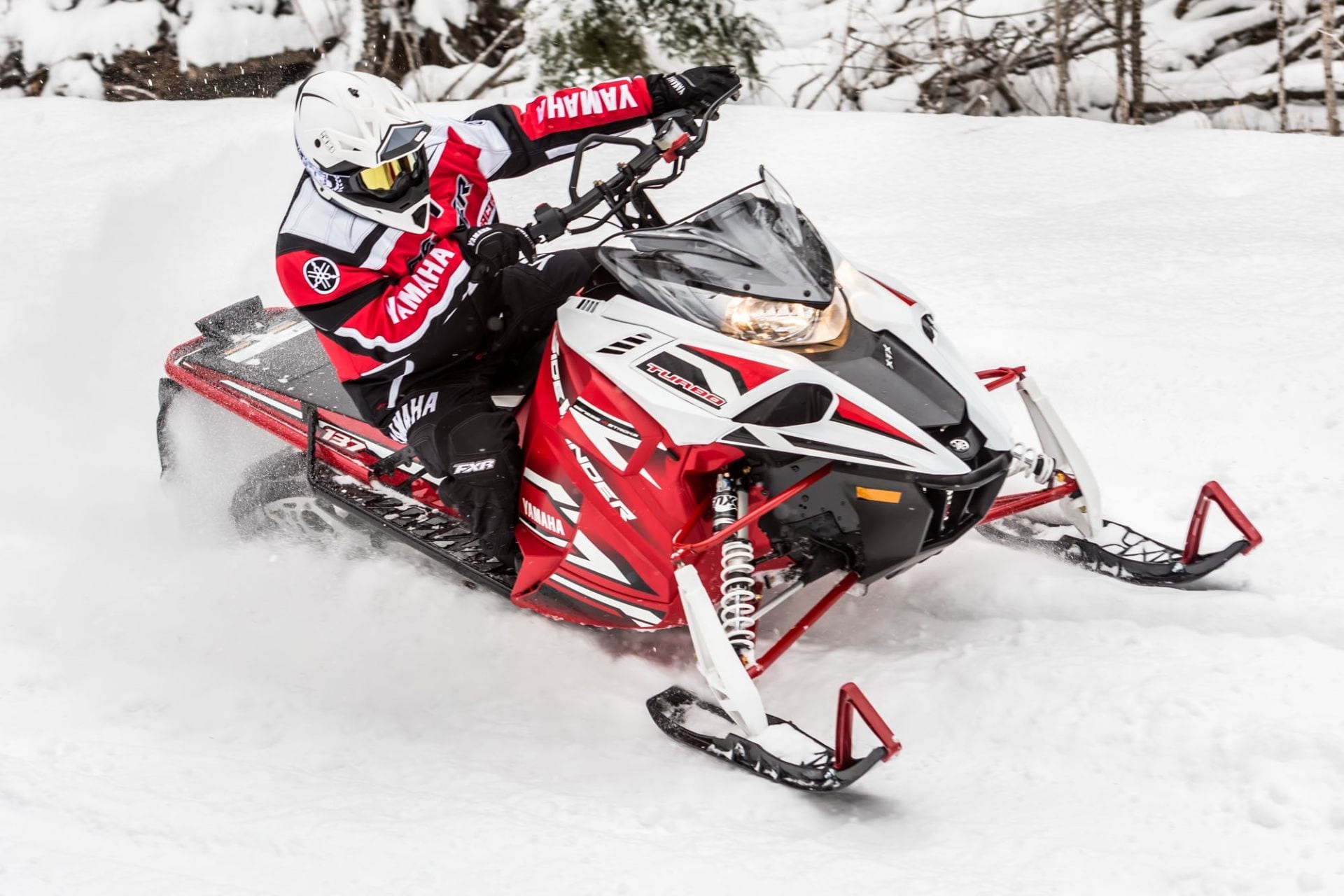
In addition to this new series of snowmobiles, I was surprised when I tested the new VK540V. Although not as spectacular as the Sidewinder, I was impressed with the engine and cosmetic improvements of this workhorse that continues to be a sure bet in the work snowmobile field.
But I must admit that my heart sank when I tested the new SideWinder X-TX SE 141. All the power of the new 998cc turbocharged Genesys engine completely blew me away, and made me say that this snowmobile is in a class of its own. Yes, because of the power at high revs, but especially because of its explosive acceleration without the delay inherent to turbo engines. Equipped with a track that I particularly appreciate, the 141x15x1.6 inch Cobra, this snowmobile does not lack traction while being very maneuverable in turns.
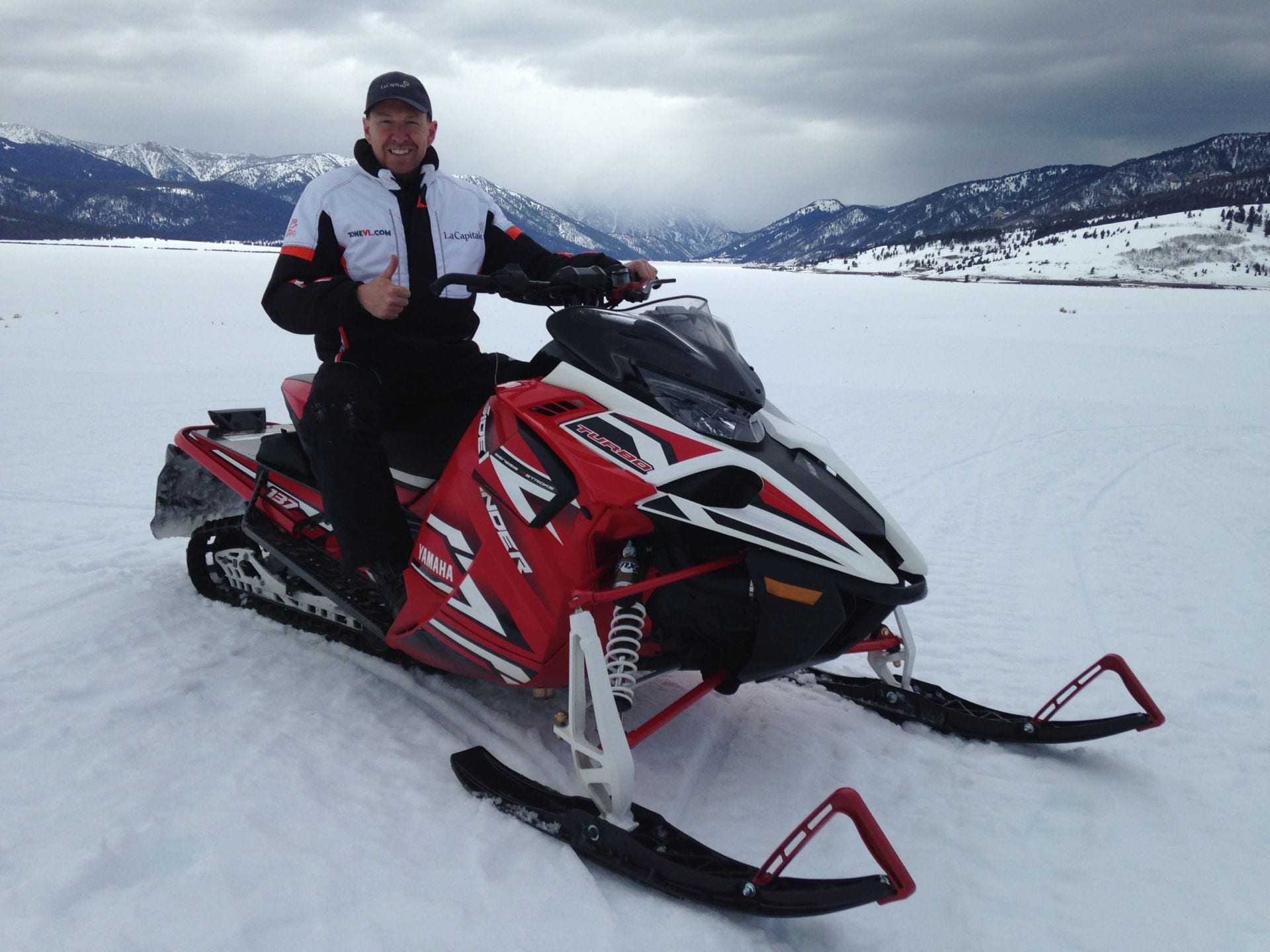
The other element that is essential for a trail sled is the comfort it can give me in the bumps. In the case of a snowmobile with extra weight induced by the four-stroke engine, it is often difficult to have a very good behavior as well as comfort in the rougher trails. Here again, the Sidewinder with the SRV-M rear suspension with FOX Float3 air adjustable shocks absorbs bumps very well. The front end handled just as well, and the comfort and handling of the sled really impressed me in most conditions. I’ve often been harsh in the past on Yamaha’s suspension calibration, but for 2017, all the Sidewinder versions I tried delighted me in this regard. Honestly, I could have chosen one or two other Sidewinder models for this season, but I finally opted for the package that ultimately satisfied me, the SideWinder X-TX SE 141.





